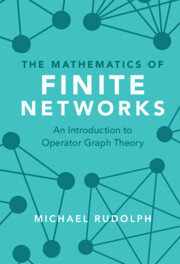1 - Introduction
Published online by Cambridge University Press: 30 April 2022
Summary
When thinking of city maps, we instinctively envision a network of links along which an ever-changing flow of traffic is carried. Such an idealised description, however, is not limited to the maps we are all familiar with. From the interactions between atoms and subatomic particles to the gravitational forces which act between the billions of galaxies stretching across the known universe, from the transmission of electrical signals in our brains to the complexity of social interactions between people, most if not all phenomena we encounter, consciously or not, find a natural representation in the form of networks. Indeed, it can be argued that the abstract notion of interacting objects resides at the very heart of our conceptual understanding of nature as it touches upon the very fabric of physical reality with its finite and discrete makeup. How can we leverage the mathematical study of interconnected objects, the theory of networks and graphs, in our quest of understanding nature, and what are its limitations?
- Type
- Chapter
- Information
- The Mathematics of Finite NetworksAn Introduction to Operator Graph Theory, pp. 1 - 10Publisher: Cambridge University PressPrint publication year: 2022

